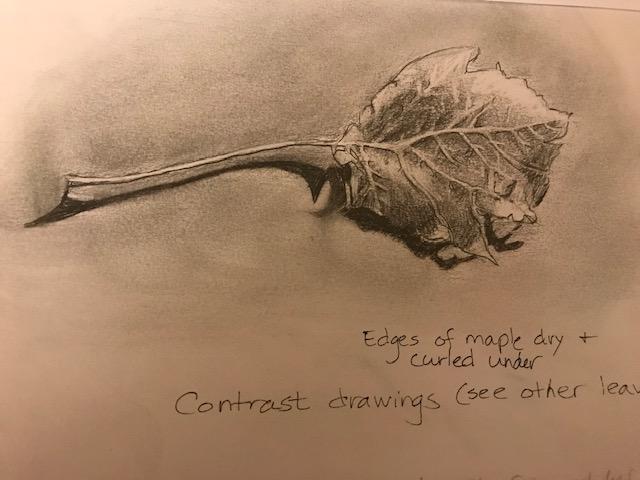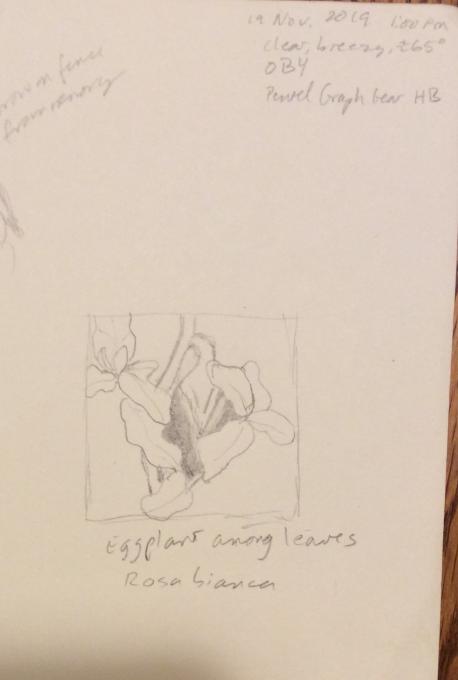The Cornell Lab Bird Academy › Discussion Groups › Nature Journaling and Field Sketching › Getting the Proportions Right
-
Is very useful because help you to have another perspective of things. Yes. Yes because all is perspective.

-
Lovely rose, you really captured the bending petals well. Leaves are nice too.
-
-

-
I had forgotten that proportion trick. I know I used it a long time ago. Thanks for refreshing my memory.
-
I found using the measuring proportion technique very effective and gives me a great tool to make sure my illustration are more accurate and proportionally correct.

-
Very nice. I like the way you captured the light petals.
-
-
I call this, “Ok, you can look now” learning the proportions trick helped me a lot to get close to the shape I was drawing



-
I love your cat and your drawings.
-
-
I used the proportion technique to draw two marsupials that were outside my tent at a recent campsite in Northern Tasmania. I used the length of the head as my initial measurement. It made me realize that the Tasmanian Pademelon is a very round animal! It also has a proportionally larger head to body size, which might be because this was a very young animal, but the Bennett's Wallaby was an adult. The negative shapes helped to draw the legs more accurately than I ever have before! I live in Tasmania, so have tried to draw these species a few times before but have greatly improved with these techniques.

-

 Houseplant, old x-mas tree. free-style sketches.
Houseplant, old x-mas tree. free-style sketches. -
how did you get the texture on the leaves of the house plant (beside the horn)?
Looks very feathery and I can almost feel it when looking at it.
-
-
The tools of negative space and proportion (measuring), I believe are going to make my drawings much better.
-
The proportion trick made a difference to my sketches by eye. It helps rough the image in a bit more accurately so that it looked more like the subject. I loved that simply using a pencil and marking along the way is the only tool you need. Proportion is easier to measure when there are distinct parts of the subject.
-
Before this study I thought I was seeing correctly but the measuring technique proved I wasn't! This was a great exercise that really helped me.

-
Using a hand to close around your better eye [or have a small, packable telescope] instead of simply squinting for a your first, immediate view of your field object; or use one piece of paper you stash in the back of your journal with its center cut for you previously with a square or small round you can squint through.
-
 Measuring proportion and using negative space were very helpful in making the drawing more accurate. Because it is still very wet and cold here, I drew from a photograph of a flower I had seen in a Maine forest. Measuring proportion seems to be very useful for drawing parts of plants and animals and for getting their positions more accurate in their settings. I’m still pretty inexperienced in sketching and drawing, so I’m not really sure yet where these techniques would be more or less helpful, but I’m excited to keep practicing and learning.
Measuring proportion and using negative space were very helpful in making the drawing more accurate. Because it is still very wet and cold here, I drew from a photograph of a flower I had seen in a Maine forest. Measuring proportion seems to be very useful for drawing parts of plants and animals and for getting their positions more accurate in their settings. I’m still pretty inexperienced in sketching and drawing, so I’m not really sure yet where these techniques would be more or less helpful, but I’m excited to keep practicing and learning.
-
Using the negative space and measuring is very helpful. I know this is a good way to help gather information for identifying birds etc. so it was great to see how to apply this to sketching. Appreciating the surrounding area really helped keep my sketch in proportion. Thank goodness for erasers!
-
This proportion thing is irritating - BECAUSE IT WORKS - and I'm usually too lazy to do it. But when I do it makes my drawings render more accurately. I did a freeze frame of those Red Foxes from the last lesson's video and tried the "number of heads" method and stuff looked better. It helped me realize the slender length of the parent fox versus the shorter, tighter form of the youth fox. I'm buying into measuring proportion! I also used some negative space to capture some of the interaction between the two animals.
I like the way the instructor asks me to "be gentle" with myself and also to just go for it. Helpful. I've destroyed a few pages of my book but also have some that I'm proud of! I got this course as a birthday gift and it's one of the best I've ever received! -
Measuring proportion is a real help. I always try to visually use the head of a bird as the guide, but the additional use of the pencil as the ruler really helps. Thinking about negative space was very helpful with drawing the feathers.

-


The lessons on negative space and proportion helped me a lot in these last two. I did not find any difference between taking a measurement of the proportions of the mushrooms or the mountains. In both situations, it helped get more faithful representations of reality. -
 Pretty amazing how easy it is to use this method. Helped me get the proportions right on this planter.
Pretty amazing how easy it is to use this method. Helped me get the proportions right on this planter. -
It took me a good hour and lots of erasing and re-drawing to get the proportions right on this, which I made from my own photo. Even though the photo was a square format, I ended up making the tiger too large and therefore losing my negative space. I did find the measuring useful, though trickier to use with a photo. And I still managed to get the right eye (our left) in too close initially and having to correct it. Same thing with the chin, which was initially too small and needed correcting. So a modicum of perfectionism (not my strongest point) is a good idea here!
Interesting observation: I always think of tigers as being orange and black, even though I spent almost 2 weeks photographing them in the wild last year. Now, when I started adding color, I realized how much white they have.

-
Wow, beautiful! I drew a tiger face last year, but it took me 3 hours! Cats have incredible eyes!!!
-
-

This is more challenging than I thought it would be. Using my eraser a lot!-
The vertical photo doesn't seem to work, sorry
-

Better
-
-
 The use of proportions really helped in that I tend to get so interested in one aspect of the subject and make that aspect too big!. This forced me to keep that tendency under control. I focused first on relative proportions and then started using negative space, too. It was rewarding that they worked together.
The use of proportions really helped in that I tend to get so interested in one aspect of the subject and make that aspect too big!. This forced me to keep that tendency under control. I focused first on relative proportions and then started using negative space, too. It was rewarding that they worked together.
I was able to use the proportion techniques on a still plant, but it takes me a long time. It will take a lot of practice before I can do this with a moving subject. -

-

I've been working on proportion with landscapes, too, but I've continued to work with leaves a little. This upside down maple leaf was on the library walkway across the street from me. The iconic maple leaf shape is not so obvious because the points of the leaf are largely curled under.-
I really like the way the high contrast shading brings out the veins in this leaf. You wouldn't see them so much from the top.
-
Nice contrast
-
-

I think this class is working! I looked at this eggplant and thought how pretty it is, but expected the drawing to be mush. The actual eggplant is prettier and the shadows need something, but I was pleased with how it came out.
It turns out that my middle-aged eyes can see either the pencil point or the distant object but not both, so I’ll need to experiment with checking proportions. Negative space helped for getting the leaf shapes right. Gesture drawing frequently also helps: it makes me decide what’s essential. -
I liked the lesson/reminder about “negative space.” I say reminder because I’ve heard of the concept before and even “studied” it a bit while reading and doing exercises from “Drawing on the Right Side of the Brain” about 35 years ago. I found the concept very helpful applied to this science journal focus. Recently I was in California (from Wisconsin) and my granddaughter came rushing in from outside and said excitedly, “I found a bug!,” and I “humored her" and went outside to see...HOLEY MOLEY, she was right! This beautiful praying mantis was just hanging around on their patio and I took a pic, then let it crawl on my hand (I remembered from somewhere they don’t really “bite”--other than maybe decapitating their mates) and it became my subject when back in (now cold and snowy) Wisconsin. I drew a frame around it for rendering purposes so I could use the concept of negative space to help me with the complex shape. That also allowed for the insect to "break out of the frame" which I wasn't planning, but really liked the effect. I like using colored watercolor pencils, and this was the first time that I scribbled a bit of pencil pigment on the page and then dipped my water-filled brush into it. This allowed me to mix dry color a bit. An interesting experience. I finished the drawing with a few extra strokes of the pencils directly on the drawing to give a stronger accent of color.

-
Nice! Welcome to CA! The frame helps me too with negative space.
-
Thanks for the tip, I have a great many insect photos so I will try your techniques
-
Wow, great drawing! Like it coming out of the box, great layout.
-
nice work!
-
-
Was anybody in the class a drafts person B-4 he or she became a interested in field sketching and journalism? I was taught about measuring proportions most simply using a pencil at arm's length or holding my thumb on my paintbrush at arm's length to make measurements and count. Another thing my first teacher suggested re: measure, focus & proportion was use two sheets of printer paper folded into perfect rectangles; from the folded tip , cut a 1"square from the center of one sheet & from the tip of the other cut a perfect 1"circle. This paper tool worked like the 'squint test ' Fuller asks us to use.

Read More:
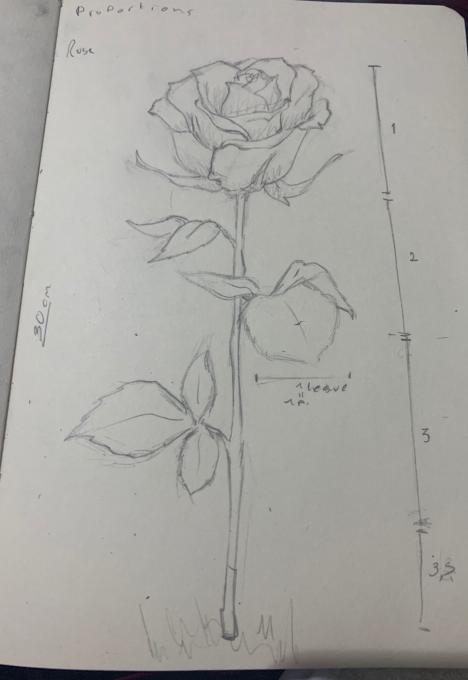
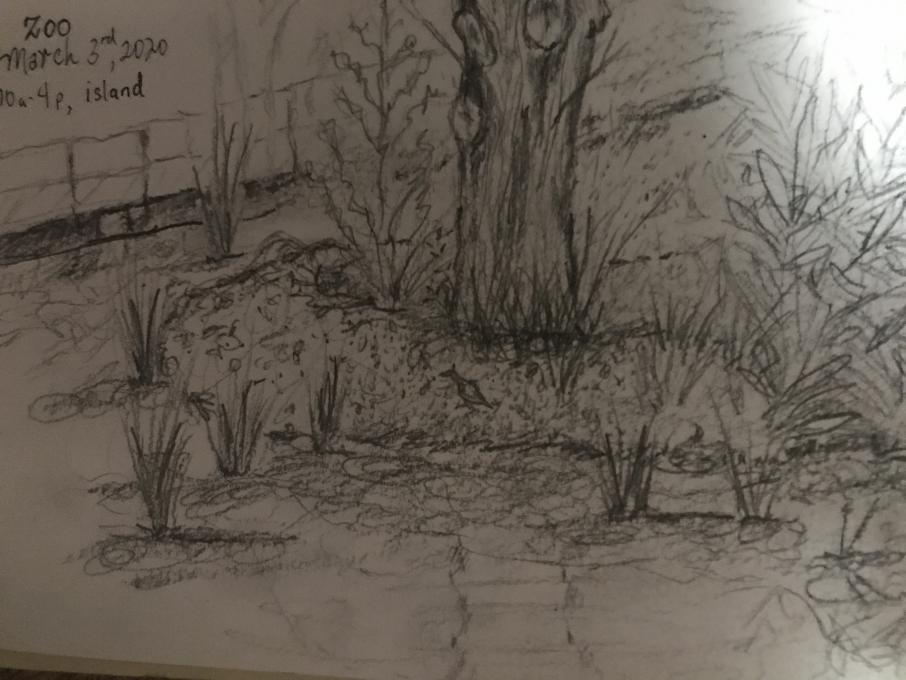
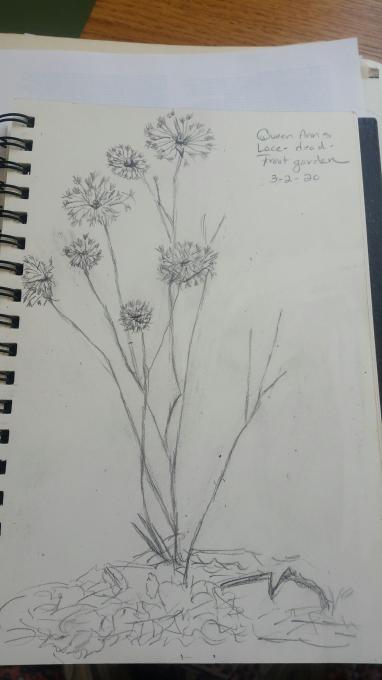
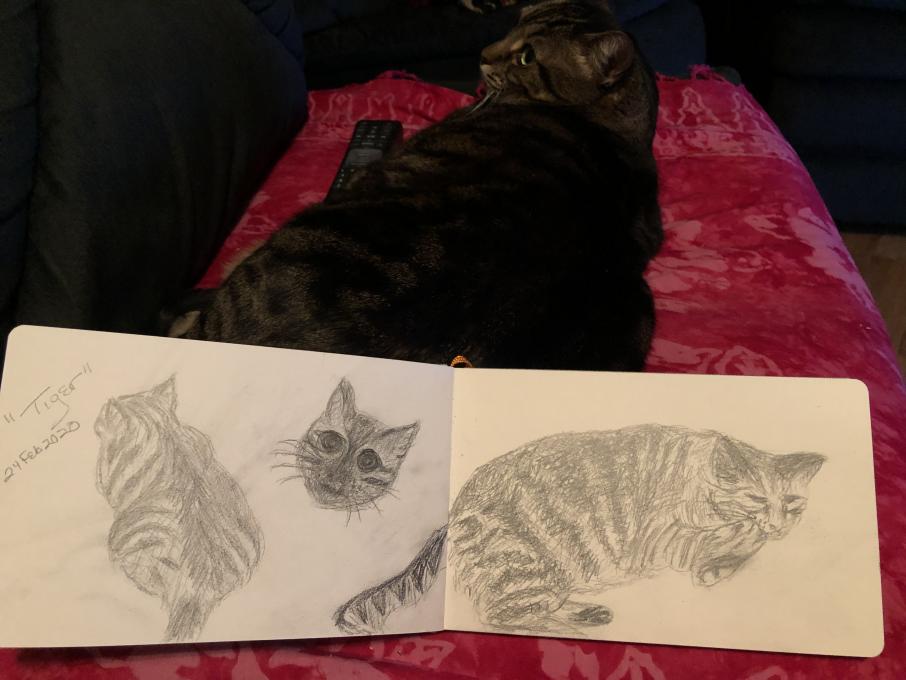
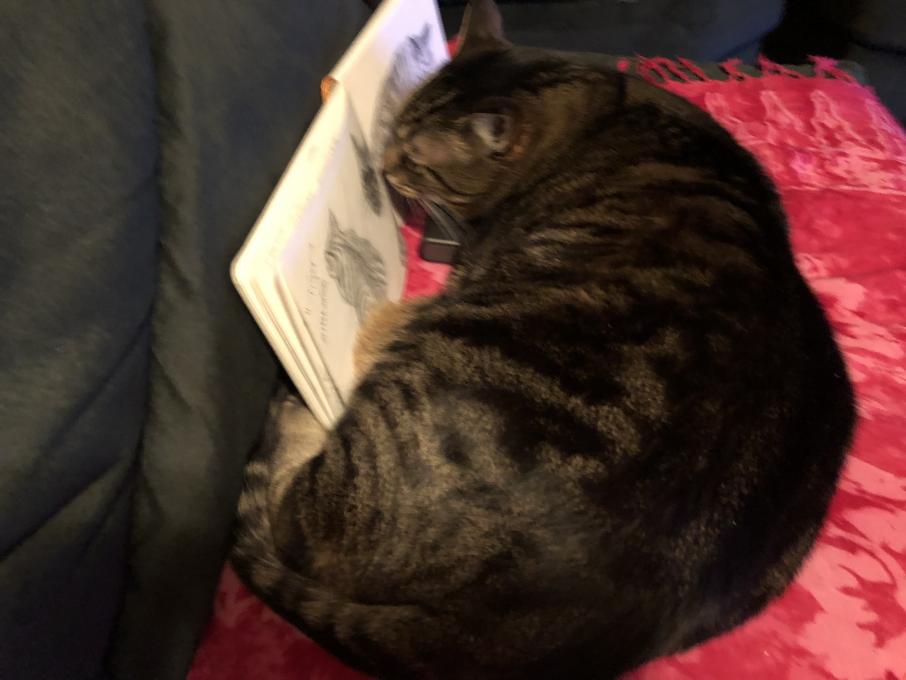
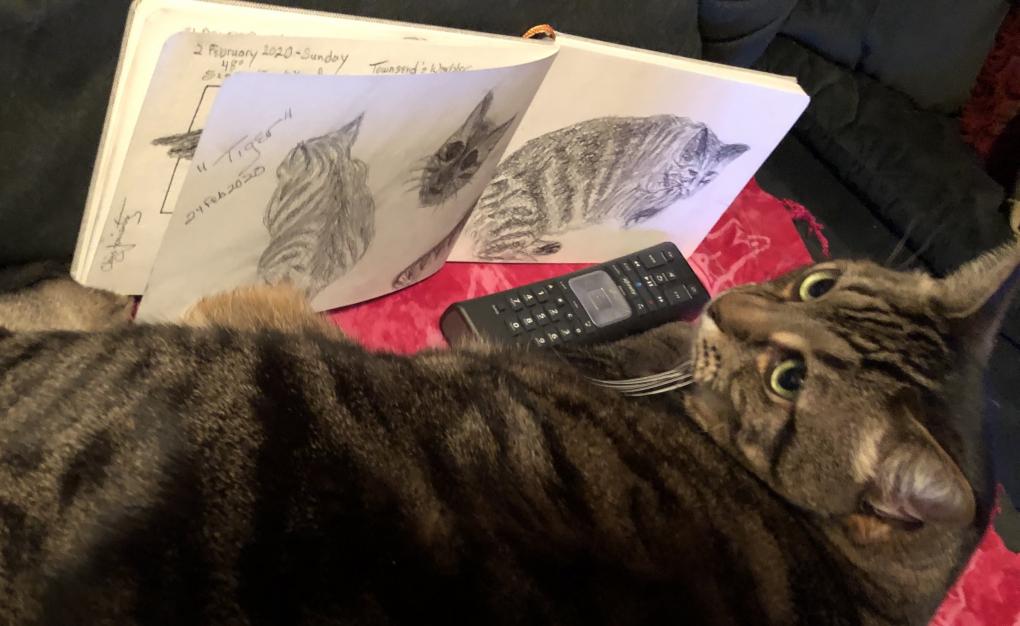
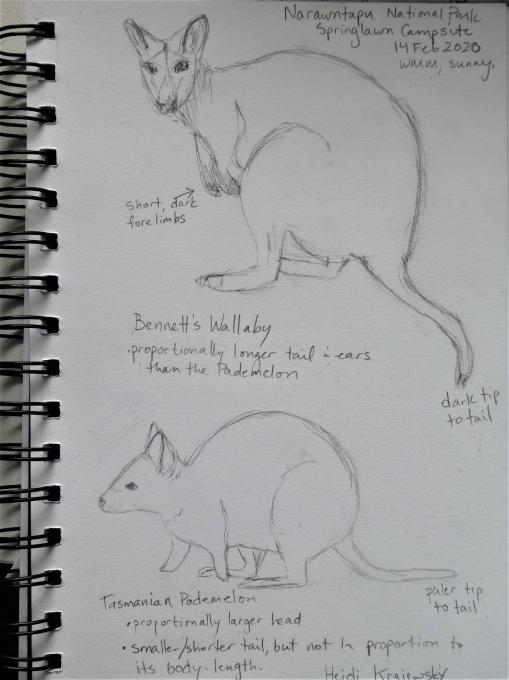
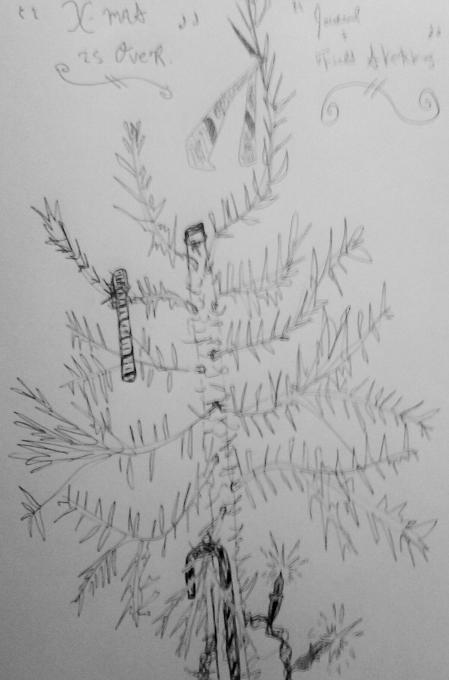
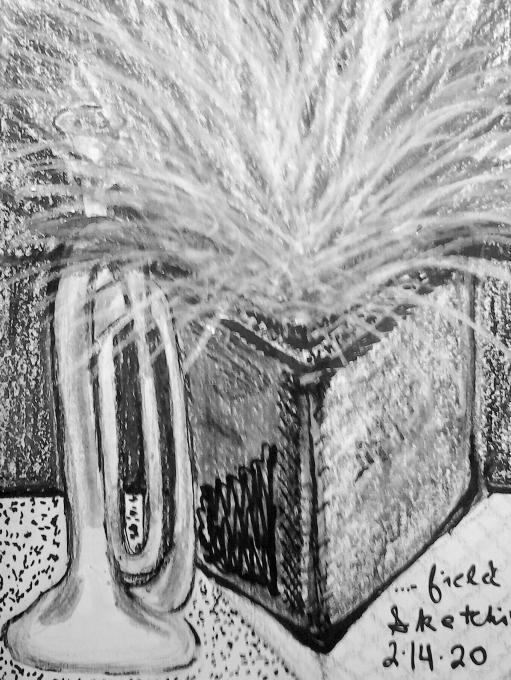 Houseplant, old x-mas tree. free-style sketches.
Houseplant, old x-mas tree. free-style sketches. 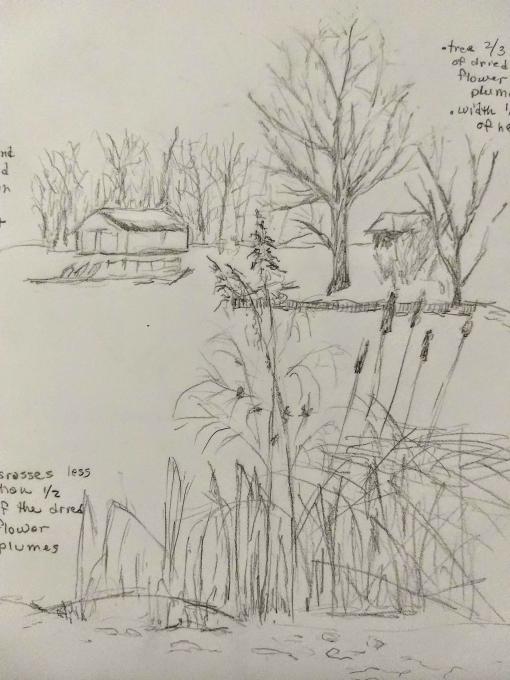
 Measuring proportion and using negative space were very helpful in making the drawing more accurate. Because it is still very wet and cold here, I drew from a photograph of a flower I had seen in a Maine forest. Measuring proportion seems to be very useful for drawing parts of plants and animals and for getting their positions more accurate in their settings. I’m still pretty inexperienced in sketching and drawing, so I’m not really sure yet where these techniques would be more or less helpful, but I’m excited to keep practicing and learning.
Measuring proportion and using negative space were very helpful in making the drawing more accurate. Because it is still very wet and cold here, I drew from a photograph of a flower I had seen in a Maine forest. Measuring proportion seems to be very useful for drawing parts of plants and animals and for getting their positions more accurate in their settings. I’m still pretty inexperienced in sketching and drawing, so I’m not really sure yet where these techniques would be more or less helpful, but I’m excited to keep practicing and learning.
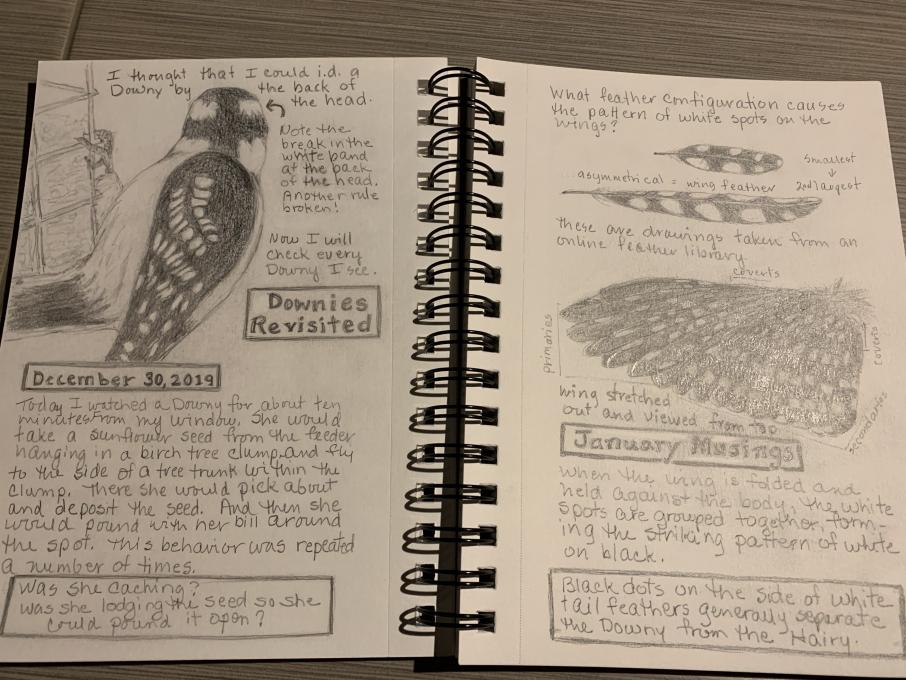
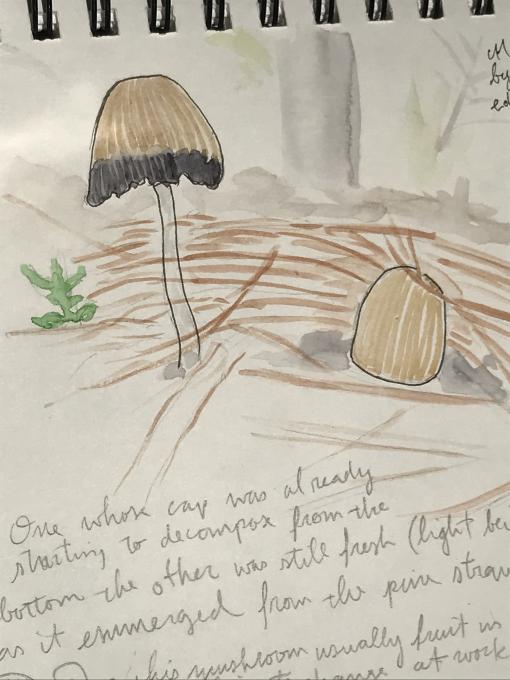
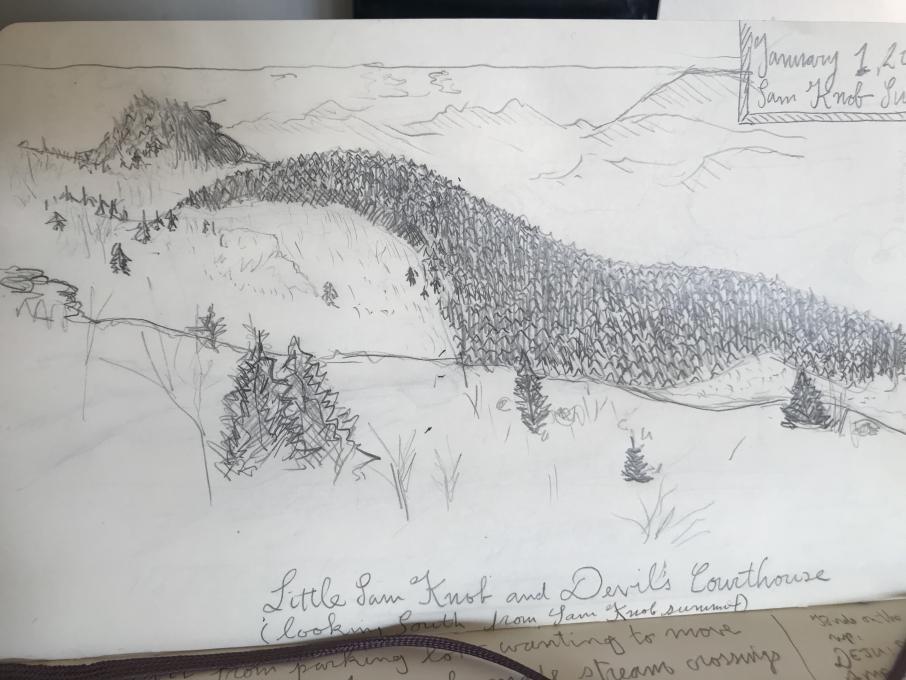
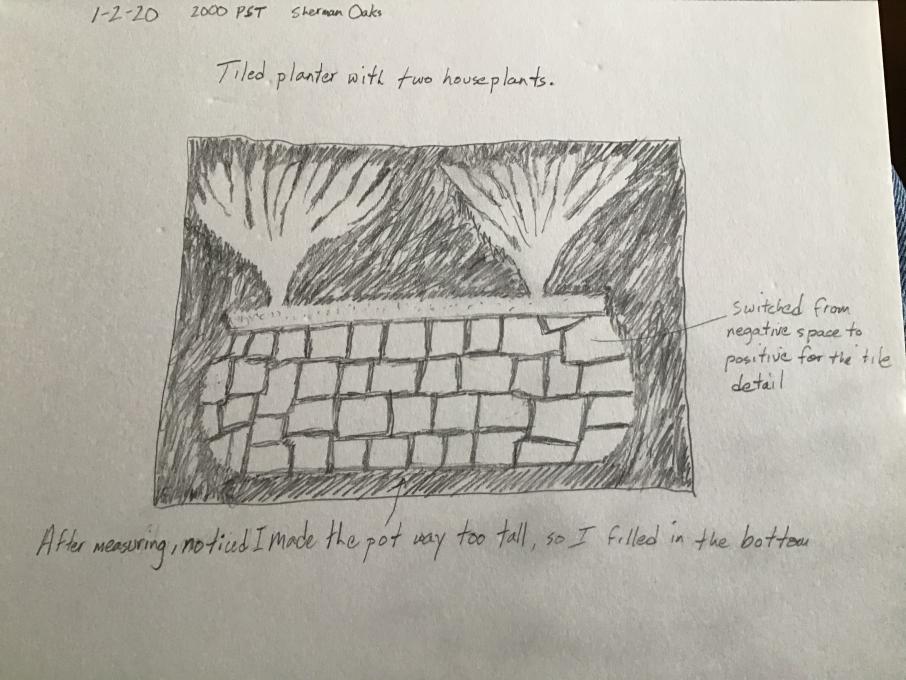 Pretty amazing how easy it is to use this method. Helped me get the proportions right on this planter.
Pretty amazing how easy it is to use this method. Helped me get the proportions right on this planter. 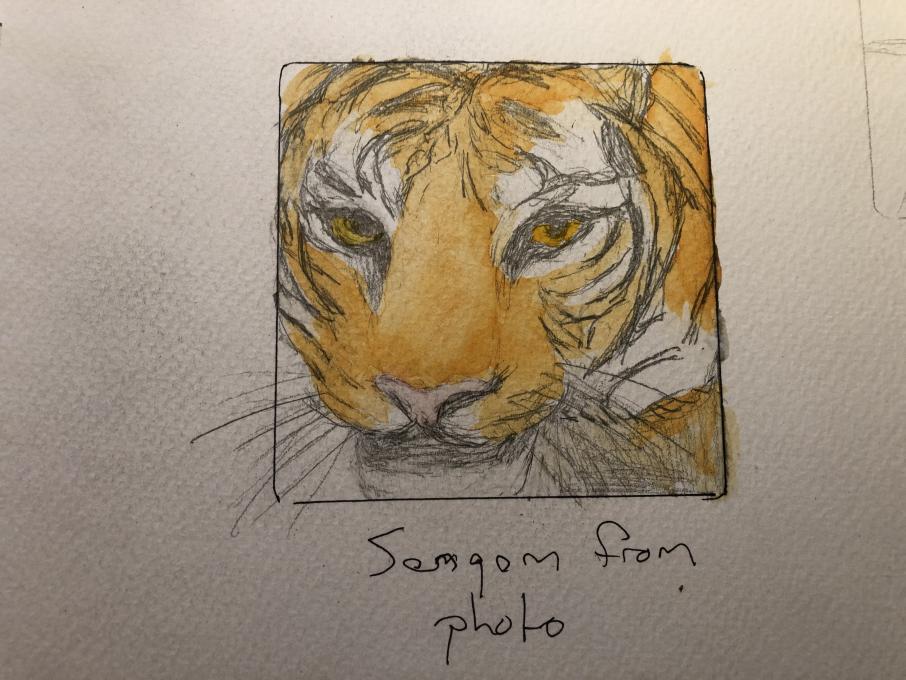


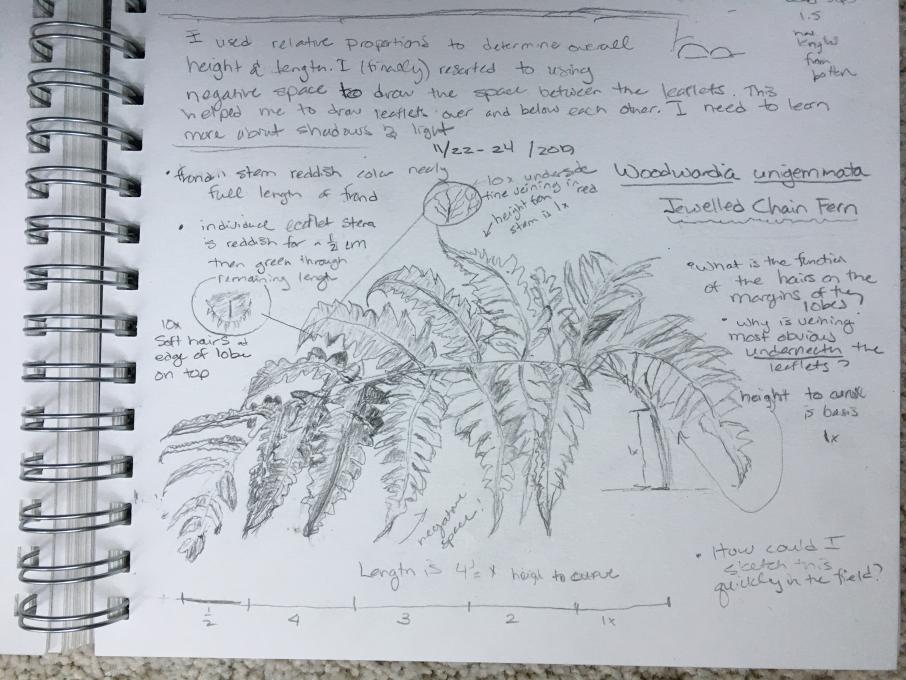 The use of proportions really helped in that I tend to get so interested in one aspect of the subject and make that aspect too big!. This forced me to keep that tendency under control. I focused first on relative proportions and then started using negative space, too. It was rewarding that they worked together.
The use of proportions really helped in that I tend to get so interested in one aspect of the subject and make that aspect too big!. This forced me to keep that tendency under control. I focused first on relative proportions and then started using negative space, too. It was rewarding that they worked together.
